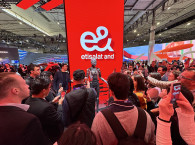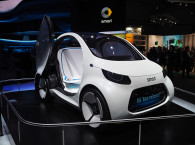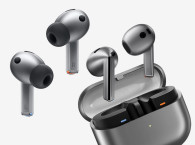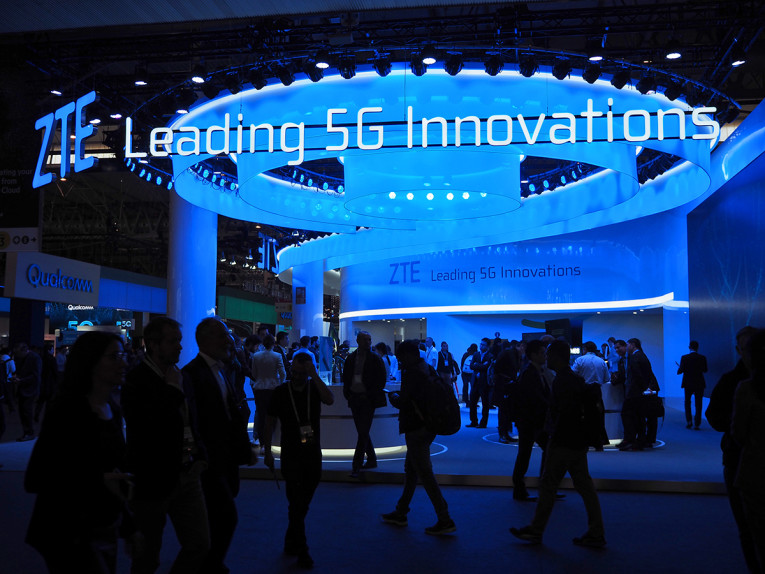
The Mobile World Congress in Barcelona, promoted since 1987 by the GSMA, or Global System for Mobile Communications association - a trade body that represents the interests of mobile network operators worldwide - is becoming a completely different event. The GSMA knows it and doesn't want to use the "Mobile World Congress," designation any longer and simply uses the acronym MWC. And that's because they recognize that "Mobile" doesn't involve only a direct connection with "mobile communications" but increasingly represents the concept of wearable connected devices, or connected mobile edge computers that will soon replace what we previously called mobile phones and currently call smartphones.
The MWC event has also morphed into a hybrid trade show like CES. Concurrently with MWC 2019, there was again the embedded world 2019 in Nuremberg, Germany. Like electronica in 2018, embedded world 2019 was a very successful event focusing on all the trendy topics of innovation in embedded electronics, wireless standards, interfaces and displays in automotive, smart cities/buildings/homes, IoT, and industrial applications.

Of course, for the vast majority of attendees, the lasting impressions from MWC 2019 - highly amplified by the gadget-oriented media - was the focus on new foldable smartphones and 5G wireless networks. And effectively, that's clearly the reasons why MWC attracted more than 7,900 CEOs this year, according to the GSMA. According to the promoting association, more than 109,000 visitors from 198 countries attended MWC 2019, and more than 55% of this year's attendees held senior-level positions. And we can confirm the show was even slightly bigger this year, with more than 2,400 exhibitors spread across the eight gigantic halls of Barcelona's Fira Gran Via, largely expanded with the 4YFN exhibits and auditoriums of the Fira Montjuïc venues - the space dedicated to start-ups and research institutions, which is much expanding like the Eureka Park at CES.

The theme for MWC 2019 was "Intelligent Connectivity," with 5G networks and devices taking center stage, including even the first demonstration of live tele-monitored surgery over 5G technology (which could perfectly have been performed with existing cabled telecom infrastructures...) I doubt the readers of this newsletter are very interested in the topic. The important thing to retain is that, yes, 5G will eventually bring faster wireless connections to the world (1 Gbps realistically, but up to 20 Gbps achievable). What will the world do with it?
The hilarious part of MWC 2019 is that most of the 5G-committed vendors didn't seem to have a clear idea, and demonstrations of virtual reality headset-nonsense seem to be the norm, on par with an overdose of multi-screen simulators, animated dioramas, and puzzling gigantic screens with abstract graphics that visitors mostly stared at in apathy. In a way, CES 2019 provided much better demonstration scenarios of 5G usage in connected cars, entertainment applications, and e-commerce - which no doubt will be key drivers in the evolution from 4G LTE to 5G.

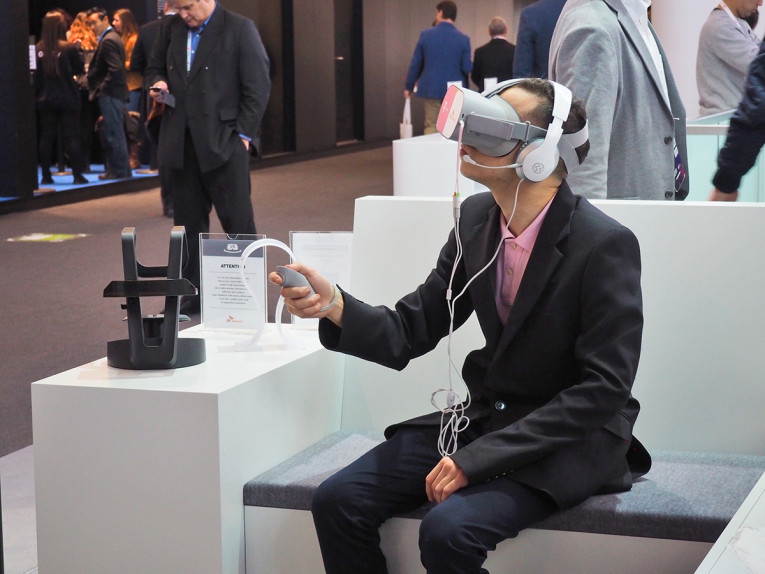

Industrial applications, M2M, Smart cities, Intelligent Agriculture, Internet-of-Things? As any visitor to embedded world in Nuremberg certainly noticed, the focus in those applications is the use of low-power wide-area networks (LPWAN) alternatives such as LoRA, SigFox, and NB-Iot, which will also eventually allow repurposing much of the spectrum currently used for the old GSM/3G networks. On the building and campus environments, we will continue to see Wi-Fi and Bluetooth technologies evolving and dominating as the consumer service layer. All those perspectives were present and well-represented at MWC this year, as they were at CES and embedded world. So, 5G clearly needs to find new selling arguments for the wireless technology super-highway.


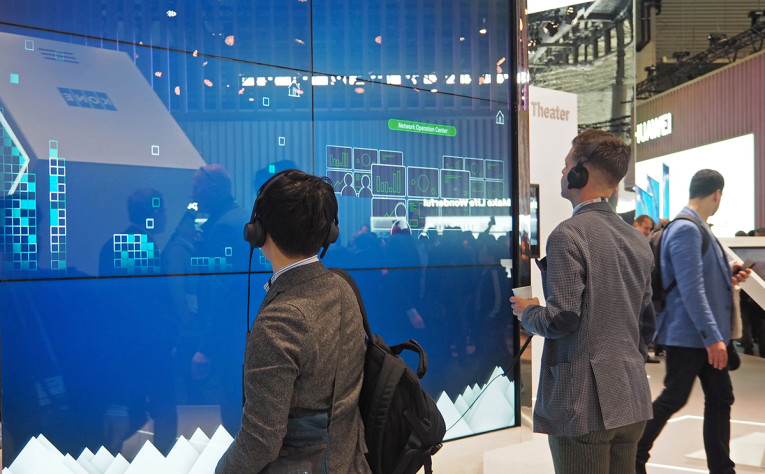
What 5G is certainly not, is a driver for consumers to buy "foldable smartphones" as some companies might have wanted us to believe. To be honest, the whole "smartphone" angle of MWC is the most pathetic and depressing side of the show, with the hype surrounding all the iPhone-clone presentations resembling a madhouse with little to no connection to the real world. While Apple successfully ignores trade shows like these and still massively dominates the market, the parade of garbage-phones from Asian companies are not much more than a showcase of industrial components that make no sense in terms of product marketing.

It is embarrassing to see even the largest companies such as Samsung, LG, Sony, Huawei, and others proudly unveiling all sorts of smartphones with smaller and larger screens, foldable or double screens, more cameras in the front and the back, more sensors, more speakers, throwing ideas at the wall to see if it sticks, and completely ignoring that they do not have any control on what really matters, which is the user experience provided by the operating system, which is owned and controlled by Google. Without any other mobile OS alternatives to Android and iOS, the consumer - and the industry in general - has really no option. Smartphone brands wait to see what Apple comes up with, and copy. Consumers either buy the original iPhone - if they can afford it - or have to do with one of the 20 different models introduced by each of the other brands, which will be discontinued in six months, even if there really was some good hardware arguments to the devices - like good quality audio.
No wonder Apple's global market share keeps expanding, as users simply pass the older iPhone models to other users when they buy the new model, creating the problem that Apple is now facing, suffering from the competition of its own success and the longevity of its products. This, while Google apparently wishes to move on to other more profitable things.

For obvious reasons, there's no other show I visit where we can see more people carrying an Android smartphone or non-Apple devices than Mobile World Congress. Still, if we were to use the attendees of the MWC show as a sample, Apple would command a 50% plus share of the smartphone market. If I were to use the computers we see in the MWC media room used by nearly 4,000 journalists as a sample, Apple would easily have more than 80% market share with Mac computers. And if we add to that the obvious presence of Apple's AirPods and Apple Watches on peoples' ears and wrists, it becomes painfully obvious that Android remains too much of a fragmented and unreliable effort to sustain the rest of the industry.

And speaking of Google, we were surprised to see much less focus on the demonstration of the Google Assistant and smart speakers at MWC 2019. In contrast with CES, voice assistant demos and smart speakers were much more discreet, and even Amazon's presence was felt but not apparent, while Google opted to work directly on the integration of its services and the Google Assistant on mobile devices. This doesn't mean that there was less of an audio focus at MWC. Quite the opposite. By visiting the semiconductor and technology companies' demos we could see that the "mobile industry" continues to focus most of its innovation in audio, benefiting the audio industry overall. It's efforts certainly represent its largest product volume in history. But there was less of a focus on smart speakers this year, and much more focus on wireless headphones.
As I said at the start of this editorial, it seems that the dominant players in voice assistant technologies already understand that the smartphone category is moving to a new level of mobile, omnipresence in wearables, smart home devices, and of course, all sorts of audio devices from speakers to headphones and hearables. Smartphone manufacturers don't want to simply amplify even more the predominance of Amazon and Google's smart assistants, and have mostly witnessed at CES this year how the smart speaker market is becoming saturated with CE products supporting those platforms and services, so they are apparently focusing on their own mobile devices and integration within the smart home, entertainment applications, and gaming.
Why is this relevant to the audio industry? Because this represents a significant shift that highlights key areas where the industry should focus and from where it could gain it's most important benefits.
As I've noted in previous years, MWC is vibrant in the presentation of the underlying technologies that power the increasingly connected society, including audio technologies for voice interface solutions, smart and connected home, and personal devices. That's why much of MWC's real action happens in closed meeting spaces and demonstration areas outside the general visitor's access, where new technologies and development platforms are shown and pitched, and engineering meetings define the products for the next two years.
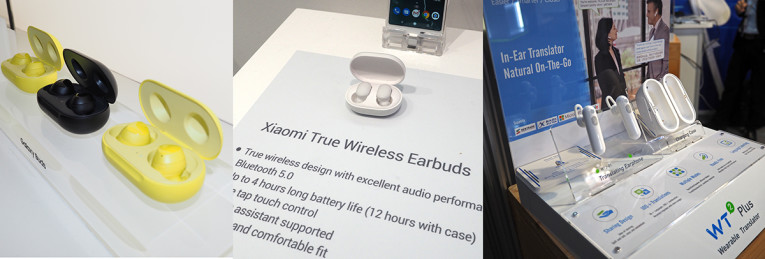
True wireless was very much the focus of the demos we saw at MWC and most of the smartphone manufacturers introduced bundled true wireless earbuds - many of which were powered by Qualcomm's recent QCC5100 and QCC302x ultra-low power Bluetooth audio SoCs. This is fine for some small brands that are looking to enter the market fast, as well as for the big smartphone manufacturers trying to get an inexpensive true wireless product to bundle with their phones, like we've seen Samsung, Huawei, Xiaomi, Lenovo, and many others attempting.
But now there are alternative platforms and technologies that also bring the promise of not only differentiating products but the realization of the most relevant promises of wearables and hearables. That's what was highlighted by CEVA/Tempow, Dialog Semiconductor, Cypress and others, both at MWC and embedded world in the same week.
And every contribution to the increased efficiency of hearables is important, as Barcelona-based research company Nanusens demonstrated. The company has developed a process to incorporate nano-sensors inside CMOS devices, which it demonstrates to be significantly helpful for any miniaturized product such as TWS earbuds, by reducing the space used by up to 20%. This frees up space for larger batteries, while also offering an interesting alternative for new sensor types to be economically added to consumer products. Nanusens was a new exhibitor at MWC 2019, with a relatively small booth positioned at the end of one of the halls, but the consistent flow of visitors was an extremely good indicator of how critical the introduction of new technologies can be for those fast-growing product categories.
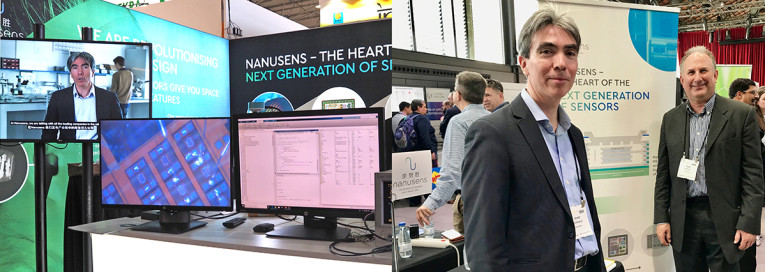
We also had the chance to see Austrian MEMS speaker sensation USound, now ready to enter the market with a new interesting proposition for true wireless earbuds. Since attending MWC last year, in partnership with STMicroelectronics, USound has raised significant investment support and its smart microelectromechanical systems (MEMS) audio products are in production and receiving firm orders. USound has developed and industrialized the smallest loudspeakers in the world, amassing more than 150 patent applications in the process. At MWC 2019, USound was demonstrating devices that enable extreme miniaturization and the highest levels of energy efficiency, implemented in VR goggles, and a prototype set of in-ears that sounded impressive - similar to the smoothness and detail of planar magnetic drivers. The MEMS speakers are now ready to be implemented in smartphones, true wireless earbuds, hearing aids, and audio modules for wearables, VR, and gaming headphones. At MWC we've also seen other prototypes of microspeakers that use different technologies, but it seems clear that USound is ready to make an impact in the audio industry.
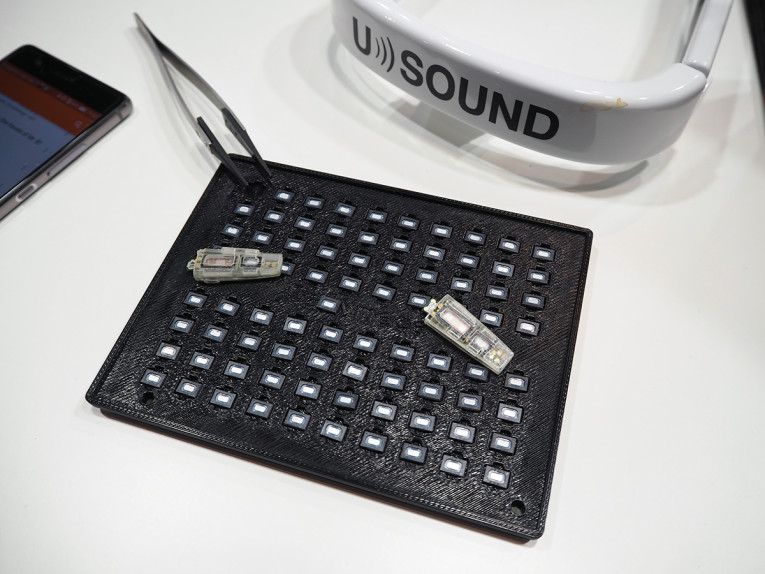

Other companies that have amassed an important experience in the field, and also own critical IP, are already adapting to this shift. That's the case with Bragi, the company that can rightfully claim to be the creators of the world's first Hearable, which now unveiled the next-generation of its technology suite and introduced it at MWC 2019. As previously announced, Bragi is now developing ultra-efficient artificial intelligence and edge computing technologies for ultra-low power devices that it intends to make available to other manufacturers, and is already offering a reference design for professional Hearables.
From the several demonstrations I witnessed at MWC, I could clearly see the trend of true wireless and wearable devices with new audio features and a level of quality that was considered impossible until recently. But I also saw a clear trend on the adoption of voice interfaces for hands-free operations in the new class of mobile devices, improved specifications in terms of materials and waterproof ratings, increased power efficiency, the massive adoption of USB-C, USB Power Delivery, fast-charging, and of course, the adoption of Qi Wireless charging, as expected since Apple embraced the standard.
Read all our MWC 2019 headlines here. MWC (www.mwcbarcelona.com) will return February 24-27, 2020, and I expect to see significant returns for these audio technology companies next year.




